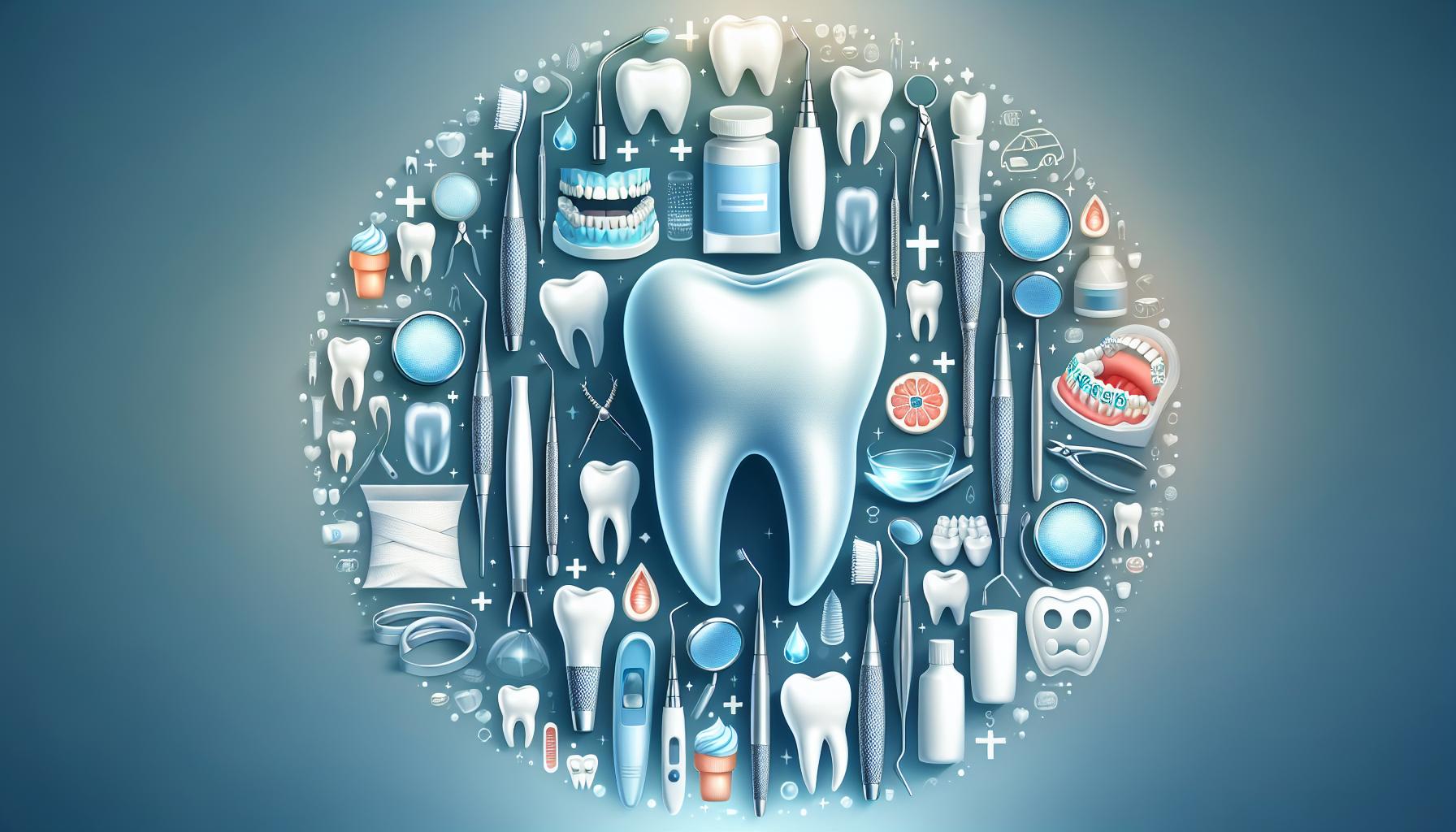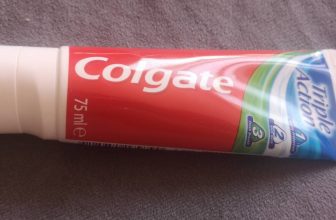
After wisdom teeth removal, navigating your diet can be challenging, especially when it comes to crunchy foods like cereal. Understanding when it’s safe to reintroduce such textures is crucial for a smooth recovery. Typically, waiting at least a week post-surgery is recommended to ensure proper healing and minimize discomfort.
Understanding the Recovery Process After Wisdom teeth Removal
After undergoing wisdom teeth extraction, many patients are eager to return to thier normal eating habits, which often leads to questions about dietary restrictions.It’s essential to understand that the recovery process involves not just physical healing, but also careful management of your diet and activities to ensure optimal recovery. Right after the procedure, your body will require time to heal, which means patience and adherence to post-operative care instructions are crucial for a smooth recovery.
During the initial days following surgery, it is advisable to stick to soft foods that are easy to chew and swallow. foods such as applesauce, yogurt, and smoothies are great options. However, many patients wonder specifically, “When can I eat cereal after wisdom teeth removal safely?” It is generally recommended to wait at least three to five days post-surgery before introducing more textured foods like cereal. This waiting period helps minimize the risk of irritating the extraction sites and promoting proper healing.
To help manage your diet and recovery timeline, here’s a simple overview of what types of food are acceptable at different stages:
| recovery Day | Recommended Foods |
|---|---|
| Days 1-2 | Soft foods (applesauce, mashed potatoes, yogurt) |
| Days 3-5 | Soft cereals (like oatmeal), smoothies, scrambled eggs |
| Day 6 and beyond | Cereal (preferably soft varieties), cooked pasta, and othre more solid foods as tolerated |
Additionally, staying hydrated is crucial, but avoid using straws for at least a week to reduce the risk of dry socket, a painful condition that can occur if a blood clot at the extraction site becomes dislodged.Following these guidelines can lead to a quicker and more cozy recovery, allowing you to transition to your regular diet, including your favorite cereals, without complications. Remember, always consult your oral surgeon or dentist for personalized advice based on your specific situation.
Why Soft Foods,Like cereal,Are Important Initially
The Meaning of Soft Foods Post-Surgery
After undergoing wisdom teeth removal, the mouth experiences important trauma, making it essential to give it time to heal. During this recovery phase, soft foods play a crucial role in providing necessary nutrition without aggravating sore gums or incisions. Foods like cereal, especially when soaked in milk, offer a gentle texture that is easy to consume while ensuring the body receives essential nutrients crucial for healing.
Soft foods such as cereal are beneficial for a number of reasons:
- Ease of Consumption: After surgery, chewing hard foods can be painful. Cereal provides a soft and manageable option that minimizes discomfort while eating.
- Nutrition: Cereal can be fortified with vitamins and minerals, contributing to your daily nutrient intake, which is vital for recovery.
- Hydration: When combined with milk, cereal helps maintain hydration, which is an often-overlooked aspect of recovery.
Incorporating soft foods into your diet can significantly aid your recovery process. Post-operatively, your dentist may recommend waiting a few days before reintroducing more solid foods, allowing your gums to heal appropriately. A soft diet, which may include cereals, is often seen as a bridge between liquid and solid foods, ensuring you are supported throughout your healing process. It’s critically important to listen to your body and consult your dentist about when it is indeed safe to transition to more textured foods, including cereals, to avoid complications.
here’s a quick reference table for some soft food options suitable after wisdom teeth removal:
| Type of Food | Examples |
|---|---|
| Cereals | Soaked oatmeal, soft granola, and cream of wheat |
| Dairy Products | Yogurt, pudding, and milk |
| Fruits & Vegetables | Mashed bananas, applesauce, and cooked carrots |
In essence, focusing on soft foods like cereal during the initial recovery phase ensures a comfortable eating experience while providing the necessary nutrients for optimal healing. As you consider the question of when can I eat cereal after wisdom teeth removal safely, remember that the timing may vary based on individual recovery but should always prioritize your comfort and healing process.
When Can You Safely Introduce Cereal Back Into Your Diet?
Introducing solid foods back into your diet after wisdom teeth removal can feel like a tasty milestone, but it’s essential to approach it carefully. cereal,a staple for many,often raises questions about timing due to its crunchy texture and potential to irritate the extraction sites. Understanding when and how to incorporate cereal can make your recovery smoother and more enjoyable.
Timing and Texture Considerations
Generally, dentists recommend that patients avoid crunchy foods, including cereal, during the immediate post-operative period. This means steering clear of these items for at least the first 3-5 days following your surgery. During this time, your mouth is healing, and introducing anything hard can pose a risk for complications, such as dislodging blood clots or causing irritation to sensitive gum tissue.
After the initial healing phase, typically around one week post-surgery, you can start thinking about reintroducing cereal. Though, it’s crucial to choose the right type of cereal. Opt for softer varieties, such as:
- oatmeal
- Grits
- Soft granola
These options are less likely to cause discomfort and can be easily modified with added milk or yogurt for a softer texture.
Listening to Your body
It’s vital to listen to your body as you transition back to solid foods. Start with small portions of softened cereal and pay attention to any discomfort or irritation.If you feel any pain while eating, it might be a signal to wait a little longer or stick to more blended diets like smoothies or applesauce.
Moreover, gradually increasing the complexity of your meals can definitely help gauge your recovery progress. For example, consider mixing a soft cereal with a bit of mashed banana or yogurt, which can add flavor and increase the softness of the meal.
Table: Recommended Timeline for Introducing Cereal
| Day Post-Surgery | Recommended Foods | Notes |
|---|---|---|
| 1-3 Days | Clear liquids, broth, pudding | Focus on hydration and soft foods. |
| 4-5 Days | Mashed potatoes, yogurt, smoothies | Introduce slightly denser, but still soft foods. |
| 6-7 Days | Soft cereals (oatmeal, grits) | Gradually reintroduce cereal, monitor for discomfort. |
| 1 Week+ | Regular cereals (if comfortable) | Allow for personal comfort levels; choose softer options first. |
By adhering to these guidelines and being mindful of your body’s response, you can safely enjoy cereal again while maintaining a focus on recovery during this transition period. Remember, patience is key when it comes to healing, and making intentional choices about your diet will contribute significantly to your overall comfort and health.
Symptoms to Watch for After Eating Cereal Post-Surgery
Understanding Symptoms to Monitor After Eating Cereal Post-Surgery
After the removal of wisdom teeth,careful consideration should be given to the foods consumed during the recovery phase. Cereal, while often considered a soft and easy option, can still trigger discomfort or complications if not approached correctly. It’s essential to remain vigilant and be aware of any symptoms that may arise after eating cereal.
Some common symptoms to watch for include:
- Pain or Discomfort: If you experience increased pain in your jaw or surgical sites after eating cereal, this may be a sign that the cereal’s texture or size is irritating your healing gums.
- Swelling: Noticeable swelling around the surgical areas post-consumption could indicate that your body is reacting to the food.
- Nausea or Vomiting: It is indeed crucial to monitor how your body reacts to new foods, especially as it can be common for some individuals to have gastrointestinal reactions following surgery.
- Bleeding: If you observe any blood in your mouth after eating, it could signify a need for medical attention, especially if it continues.
Monitoring these symptoms is especially important within the first few days after surgery, as your body adjusts to the absence of the wisdom teeth. If you have opted for cereal that doesn’t require much chewing,such as soft varieties or those soaked in milk,you may minimize the risks.However, if you notice any concerning symptoms, it is advisable to consult with your healthcare provider.
In addition to the physical symptoms listed, be aware of how your overall recovery progresses. Each individual heals at a different rate, and what works for one person may not work for another.Adjust your diet gradually and consider sticking to softer options until you can confidently reintroduce different textures, including cereal. This approach aligns with the guidelines on nutrition after surgery, emphasizing the importance of a balanced diet rich in protein and vitamins to support healing [[1]](https://www.templehealth.org/about/blog/6-tips-for-good-nutrition-after-surgery).
By understanding and monitoring potential symptoms after eating cereal, you can enhance your recovery experience and make informed dietary choices.Staying aware of your body’s responses will guide you on when it is indeed safe to enjoy foods like cereal without discomfort or health issues.
Tips for Choosing the Right Type of Cereal for Recovery
while recovering from wisdom teeth removal,nutrition plays a crucial role in the healing process. Choosing the right type of cereal can be an excellent way to ensure you are consuming a soft, digestible food that still provides necessary nutrients. So, what should you look for when selecting cereal during this recovery phase?
prioritize Soft Textures
After surgery, your mouth will be sensitive, and you should avoid anything hard, crunchy, or overly sticky. Opt for cereals that are soft and can easily be combined with milk or yogurt, which can help create a smooth consistency. Cheerios, oatmeal, or puffed rice cereals are safer choices that can be gentle on your healing gums.
Watch Out for Sugar Content
When selecting cereals, be cautious about the sugar content. High-sugar cereals might taste good but can lead to inflammation and discomfort during recovery. Look for options that have less than 10 grams of sugar per serving. Many brands now offer cereals marketed as healthy that contain whole grains and natural sweetness without excessive added sugars.Aim for whole grain cereals, which provide more fiber and nutrients important for your recovery.
balance Nutritional Needs
Recovery from oral surgery also necessitates adequate protein intake to aid healing. Combining your cereal with sources of protein, such as nonfat milk or yogurt, aligns with recommendations for muscle recovery, which is key for tissue growth and repair post-surgery. This combination not only makes the cereal easier to eat but also boosts its overall nutritional profile [2[2[2[2].
- Soft cereals are better: Choose textures that won’t irritate your gums.
- Mind the sugar: Select cereals low in added sugars.
- Include protein: Pair cereals with milk or yogurt.
| Cereal Type | Texture | Protein Source |
|---|---|---|
| Oatmeal | Soft | Milk/Yogurt |
| Cheerios | Slightly Crunchy (when submerged in liquid) | Milk |
| Puffed Rice | Soft | Yogurt |
These tips not only make your meals more manageable during recovery but also ensure that you are taking care of your body as it heals. Choosing the right kind of cereal to eat post-surgery can significantly affect how comfortable and nourished you feel as you navigate this period. Remember,the goal is to maintain nutrition while allowing your mouth to heal smoothly.
Incorporating Cereal into Your Diet: Best Practices
When recovering from dental surgery, especially wisdom teeth removal, it’s essential to focus on foods that are easy to eat and don’t pose a risk of discomfort or complications.Cereal, when consumed correctly, can be a versatile and nutritious option that meets these requirements. however, the key is to incorporate it into your diet thoughtfully, ensuring it promotes healing while also being satisfying and enjoyable.
Choosing the Right Type of Cereal
Not all cereals are created equal, especially after wisdom teeth surgery.when considering when you can eat cereal safely, opt for soft, non-crunchy varieties that won’t irritate sensitive gums. Look for cereals that are:
- Low in sugar: High-sugar cereals can promote inflammation, so select options that are low in added sugars.
- High in fiber: Whole grain cereals can aid your digestive health,which is notably important if you’re adjusting your diet post-surgery.
- Easy to chew: Consider soft cereals or ones that can be easily soaked in milk to soften them further.
Some examples include oatmeal or softer cereals specifically designed for quick absorption of milk. Avoid granola or any cereal with hard chunks that might irritate the surgical site.
Preparation Tips for Enjoyable Recovery Meals
The way you prepare and serve your cereal can significantly influence your comfort as you recover. Here are practical steps to make cereal a safe choice:
- Soak: Allow your cereal to soak in milk or a dairy substitute for a few minutes to soften it; this will make it easier to chew and swallow.
- pair with bananas or yogurt: Soft bananas or yogurts provide additional creaminess and flavor, enhancing your cereal experience without adding extra strain on your healing gums.
- Watch the temperature: Ensure that the cereal and milk combination is not too hot,as this could irritate sensitive areas in your mouth.
establishing a Balanced Diet
Incorporating cereal into your meals is an excellent way to maintain nutritional balance while recovering. As you navigate your recovery phase, consider integrating canned or cooked fruits alongside cereals for added vitamins and minerals. Such as, adding applesauce or pureed fruits can provide essential nutrients without requiring much chewing.While thinking about when you can eat cereal after wisdom teeth removal safely, remember to monitor your body’s responses. Start with smaller portions and evaluate how your mouth feels before increasing serving sizes or trying different types of cereals.
| Cereal Type | Benefits | preparation Tips |
|---|---|---|
| oatmeal | High in fiber,easy to digest | Soak in milk for 2-3 minutes |
| Soft Corn Flakes | low sugar,minimal chewing | Soak briefly in milk |
| Puffed Rice | Lightweight and soft | Mix with yogurt for nutrients |
during your healing process,choosing the right cereal and preparing it thoughtfully can help you enjoy this staple food safely.Being mindful of your choices will ease your recovery,allowing you to savor your meals without discomfort.
Professional Insights: What Your Dentist Wants You to Know
Understanding Your Recovery Timeline
After undergoing wisdom teeth removal, many patients are eager to return to their normal eating habits, including enjoying a bowl of their favorite cereal.However, it’s crucial to prioritize healing during this sensitive recovery period. The general guideline recommends waiting at least 3-7 days before introducing solid foods back into your diet, depending on the complexity of your extraction and the unique healing process of your mouth.During the initial recovery phase, your dentist will likely advise you to stick to soft foods to minimize discomfort and complications. Foods such as yogurt, applesauce, and smoothie bowls are excellent substitutes that can provide necessary nutrients without risking injury to your healing gums or stitches. You might wonder, “When can I eat cereal after wisdom teeth removal safely?” The answer typically hinges on how well your recovery progresses.
Tips for Safely Enjoying Cereal Post-Extraction
Once you’ve received the green light from your dentist, there are several strategies to ensure that you can enjoy cereal safely:
- Choose Soft Options: Start with softer cereals like oatmeal or cream of wheat. These choices can be easier on your mouth and less likely to cause irritation.
- Add Moisture: Consider soaking your cereal in milk or a plant-based option to soften it further. Avoid dry, crunchy cereals in the initial stages of your recovery.
- Watch the temperature: Room temperature or slightly warm cereals can be soothing. Avoid hot cereals immediately after surgery, as heat can exacerbate swelling.
- Listen to Your body: Pay attention to any discomfort during eating. If cereal causes pain or discomfort,consult your dentist before continuing.
| Day Post-Extraction | Recommended Foods |
|---|---|
| 1-2 Days | Soft foods (yogurt, applesauce, smoothies) |
| 3-5 Days | Soft cereals (oatmeal, cream of wheat), mashed potatoes |
| 6+ days | Transition to more robust options as tolerated (cooked cereals) |
Following these guidelines can definitely help you navigate your diet with ease as you recover. Always remember, consultation with your dental care provider is essential to ensure your specific needs are met.Monitoring your symptoms and progress is key to understanding the right time for you to reintroduce foods like cereal into your diet safely and comfortably.
common Concerns: Can Eating Cereal Delay Your Healing?
When it comes to post-surgical recovery, particularly after an invasive procedure like wisdom teeth removal, your diet plays a crucial role.Many people wonder, especially as they start to feel better, about incorporating familiar foods back into their meals. The big question often arises: Can eating cereal delay your healing?
Potential Concerns with Cereal Post-Surgery
Texture and Ingredients
Soft, processed cereals often seem like a safe choice after surgery, but it’s essential to consider their texture and ingredients. Most cereals are crunchy, and biting into tough pieces can harm healing tissues in your mouth. Additionally, cereals high in sugar may lead to inflammation, which can hinder healing. Therefore, it’s vital to choose soft, gentle options if you’re keen on satisfying that cereal craving.
Nutritional Value
Cereals provide various nutrients, but not all options are created equal. Many breakfast cereals are fortified with vitamins, but some are also loaded with sugars and artificial ingredients that may not be beneficial for your recovery. Ensuring you consume cereals that are whole grain and low in sugar can offer the fiber and vitamins your body needs during this time without compromising your recovery.
Safe Alternatives
If you are steadfast to have cereal after your wisdom teeth removal, consider these options:
- Oatmeal: Soft and easy to eat, oatmeal is a fantastic choice that provides fiber and can be sweetened naturally with fruits or honey.
- Cream of Wheat or Rice: These options are smooth and can be flavored to your liking, offering essential nutrients without crunch.
- Smoothie Bowls: Rather of customary cereal, consider creating a smoothie bowl topped with soft fruits to give you those breakfast vibes without the harsh texture.
Conclusion
while it’s not a hard rule that cereal will delay your healing,the type of cereal and your current recovery stage are vital considerations. You can enjoy cereals post-wisdom teeth removal, but monitor your body’s response and stick to soft, less abrasive forms. As recovery progresses, you may gradually reintroduce different textures, giving your healing process the best chance.Always remember to listen to your body and consult your dentist for tailored advice.
Q&A
When Can I Start Eating Cereal After wisdom Teeth Removal?
After wisdom teeth removal, most dentists recommend sticking to a soft food diet for at least the first 72 hours. This means that if you’re wondering about when to introduce cereal into your diet, it’s best to wait until your discomfort starts to decrease.Generally, patients may begin to eat cereal around a week post-surgery, but there’s a catch — the type of cereal matters significantly!
Soft cereals like oatmeal or cream of wheat can be good introductions because they don’t require much chewing and are easy to swallow. Conversely, crunchy cereals like cornflakes should be avoided until your gums have healed more, as they might irritate the surgical site and cause discomfort.
What Type of Cereal Is Safe to Eat After Surgery?
when you first reintroduce cereal into your diet,focus on softer varieties. Here are a few options:
- Oatmeal: A warm, soothing choice that can be flavored with honey or fruit.
- cream of wheat: Similar to oatmeal but even softer in texture.
- Cereals soaked in milk: If you love your crunchy cereals, consider soaking them in milk to soften them before eating.
It’s crucial to ensure that any cereal you choose does not require significant chewing and does not have hard, jagged pieces that could aggravate your healing gums. The idea is to ease back into your regular diet without causing discomfort or setbacks in your recovery.
How should I Prepare Cereal After Wisdom Teeth Extraction?
To prepare cereal safely after wisdom teeth removal, you might need to adapt your typical method slightly. Instead of simply pouring cereal into a bowl, consider the following steps:
- Soak the cereal in milk until it becomes soft. This will reduce the chances of needing to chew hard pieces.
- You can also blend cereals into a powder and mix them with yogurt or smoothies for an easy-to-eat option.
- Adding mashed bananas or applesauce can create a nutrient-rich meal that’s gentle on your mouth.
By modifying the texture of your cereal, you can enjoy your breakfast without worrying about irritation or discomfort.
What signs Should I Watch For When Eating Cereal Post-Surgery?
After resuming cereal intake, keep an eye out for any signs that might indicate problems with your healing process. If you notice any of the following, it’s wise to consult your dentist:
- Increased pain or swelling in your gums after eating.
- Bleeding that lasts longer than a few minutes after eating.
- Difficulty swallowing or persistent discomfort.
Listening to your body is essential. If you’re feeling fine, you can gradually introduce more types of cereal into your diet. However, if any issues arise, don’t hesitate to reach out to your healthcare provider.
Can I Eat Cereal with Milk After Wisdom Teeth Removal?
Yes,you can eat cereal with milk after wisdom teeth removal,but it’s advisable to wait a few days. As mentioned, soft, less crunchy cereals are ideal for this stage of recovery. Milk can definitely help soften the cereal even further, making it easier to eat.
When consuming cereal with milk, ensure the milk is at a comfortable temperature. Extremely cold or hot foods can cause dental sensitivity during healing, so sticking to lukewarm options is usually best. If you feel discomfort while eating this combination, it may be best to hold off a bit longer on incorporating cereal into your diet.
How Can I Ensure a Smooth Recovery While Eating Cereal?
To maintain a smooth recovery while incorporating cereal into your diet, follow these tips:
- Chew gently on the opposite side of your mouth when possible.
- Focus on small amounts of cereal and chew slowly to avoid irritating your gums.
- Stay hydrated and pair your meals with plenty of water to help soften food while aiding in recovery.
Additionally, prioritize other soft foods and liquids in your diet for the first week. Incorporating a variety of gentle foods ensures you get the nutrients your body needs to heal efficiently while keeping your meals enjoyable.
Closing Remarks
Conclusion: Enjoying Cereal safely After Wisdom Teeth Removal
After your wisdom teeth extraction, it’s essential to prioritize your recovery by being mindful of what you eat. Remember these key points:
- Stick to Soft Foods Initially: During the first few days, focus on a soft food diet.Options like smoothies, yogurt, and applesauce are great. Avoid crunchy foods that could irritate your healing gums, including cereal with a hard texture[2[2[2[2].
- Gradual Progression: As your recovery continues and your discomfort decreases, you can start incorporating more solid foods.Generally, after about a week, many individuals can begin to eat softer cereals that are less abrasive[3[3[3[3].
- Listen to Your Body: Everyone’s healing process is different. If you feel any pain or discomfort while trying to enjoy cereal, consider waiting a bit longer before reintroducing it into your diet.
Taking these steps will help you enjoy your favorite foods again safely and comfortably. For more tips on recovery and dietary choices post-extraction,stay informed and explore more articles on our site to make the best decisions for your health. Your smile deserves the best care!










